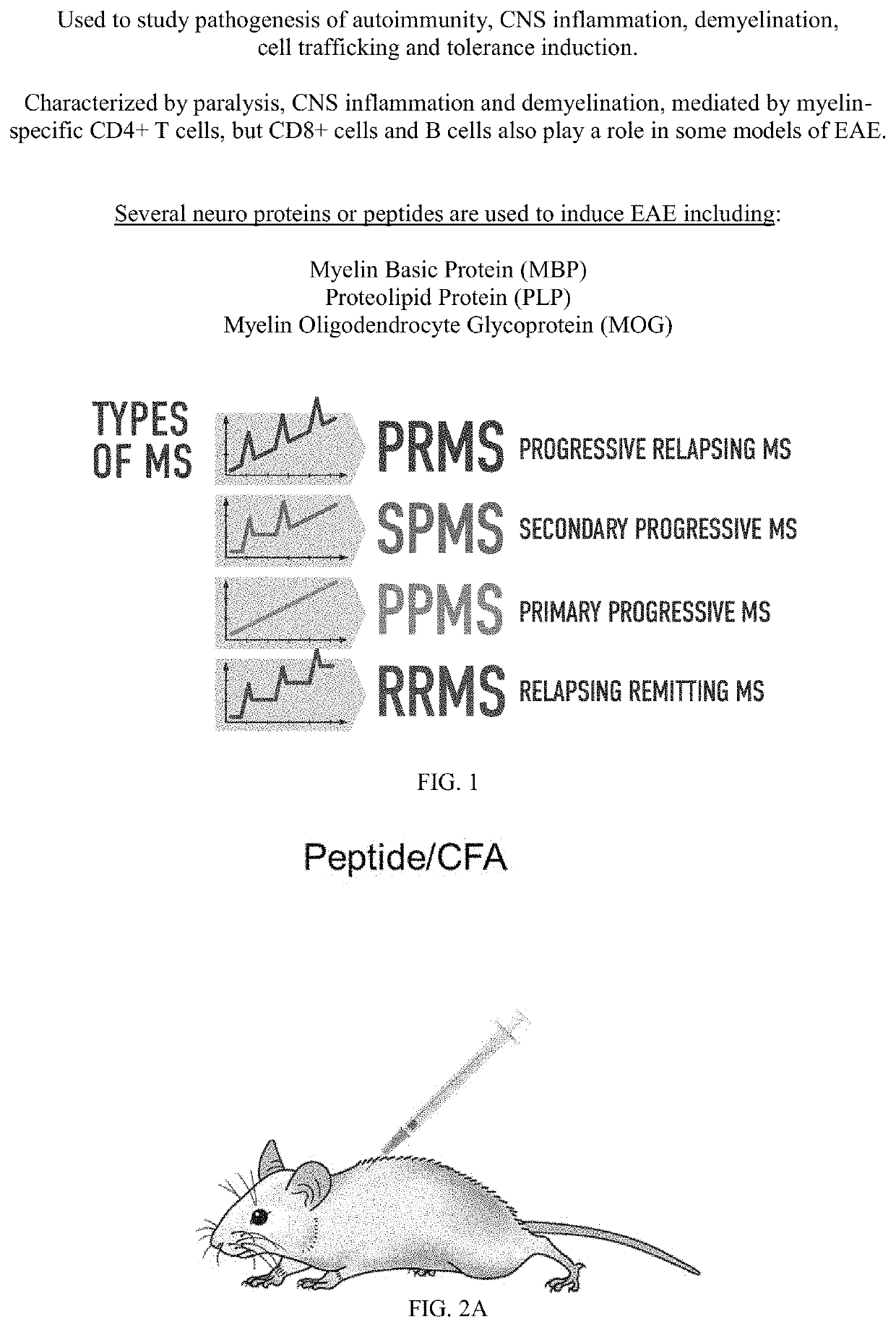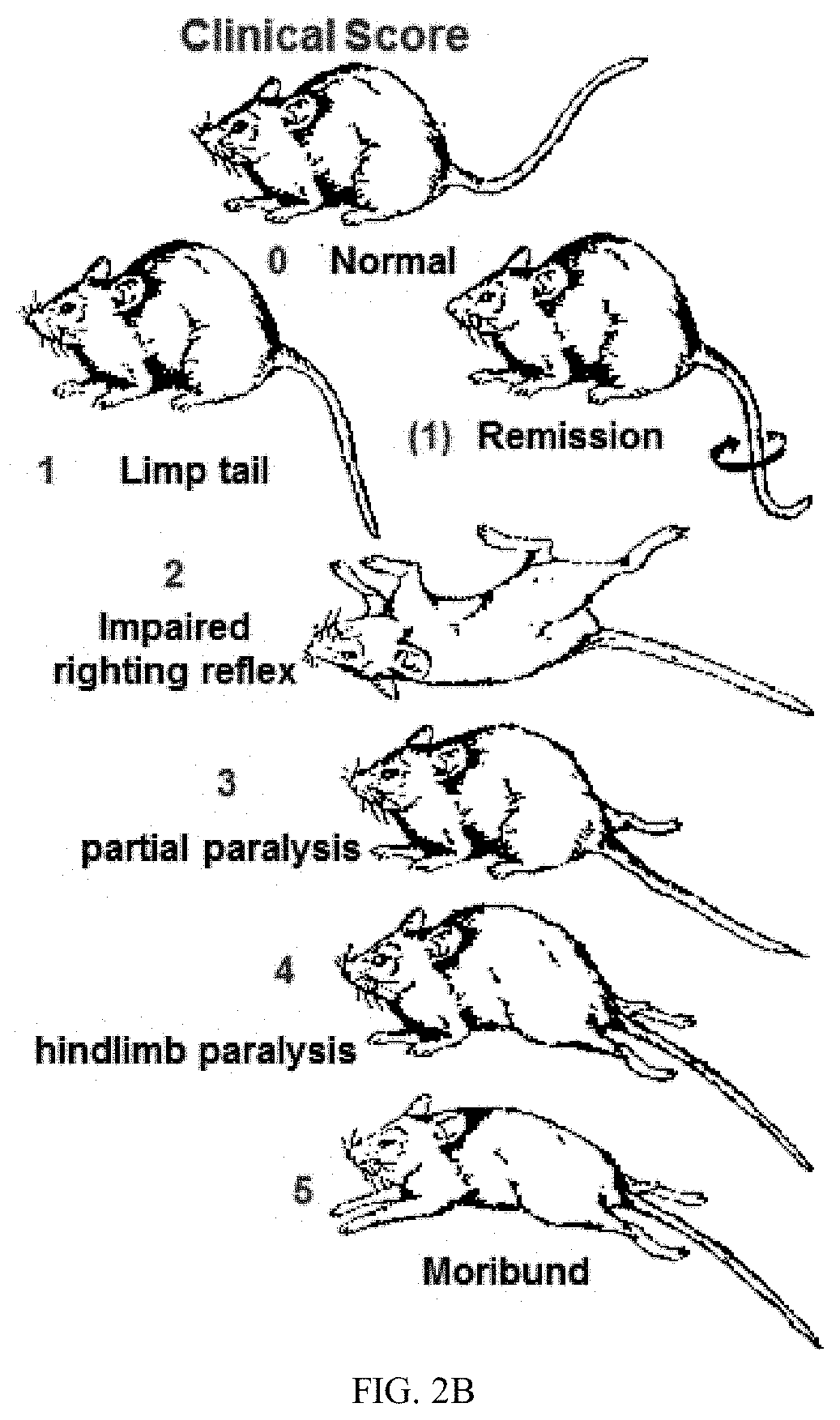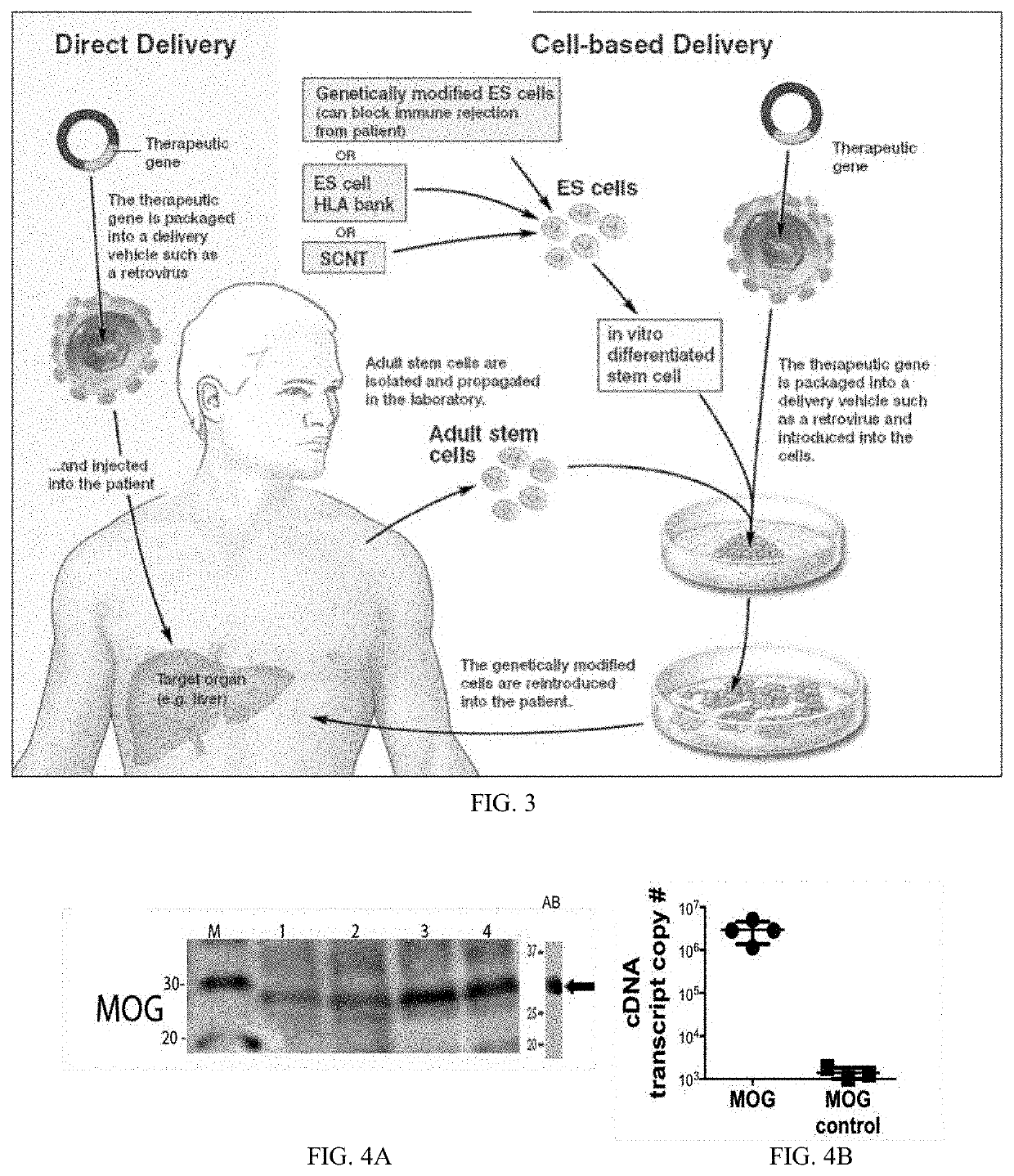Aav-based gene therapies for treatment of autoimmune diseases
a technology for autoimmune diseases and gene therapies, applied in the field of molecular biology and virology, can solve the problems of limited therapeutic efficiency, muscle control, vision, etc., when targeted to non-immune privileged organs, and achieve the effects of reliably induced immune tolerance, robust antigen-specific immune tolerance, and preventing the onset of autoimmune diseases
- Summary
- Abstract
- Description
- Claims
- Application Information
AI Technical Summary
Benefits of technology
Problems solved by technology
Method used
Image
Examples
example 1
ishing Immune Tolerance to Neuroantigens by AAV Gene Therapy
[0269]The inventor has demonstrated that hepatocyte-restricted expression of an AAV-delivered neuroantigen establishes persistent immunological tolerance mediated by antigen-specific Tregs capable of preventing and reversing EAE in mice. This example describes the development of a protocol that persistently induces Tregs in vivo and prevents disease development in a murine model of MS. The example also determines if tolerance can induce remission of pre-existing EAE disease and substantially reduce clinical and tissue-associated pathology.
[0270]Neurodegenerative disease such as Multiple sclerosis (MS) is characterized by chronic infiltration of the CNS by pathogenic autoreactive lymphocytes that recognize neuroantigens. Functional defects in the endogenous regulatory T cells (Tregs) leading to a failure of central and / or peripheral mechanisms required for maintaining immunological tolerance combined with T cells recognizing...
example 2
ic Molecules for AAV-Based Gene Therapy of MS
[0274]This example shows that liver directed gene transfer using an AAV vector expressing a neuro-antigen is capable of suppressing inflammation in the CNS and preventing EAE. Importantly, using AAV to express a full-length neuro-protein will enable greater applicability across MS-associated HLA haplotypes. Ongoing plans are to evaluate reversal of pre-existing EAE and functional analysis of the interplay of effector (Th1 / Th17) cells and Tregs.
[0275]Using the following sequences for full length proteins, HLA / MHC restrictions were avoided.
MBP sequence in vector:(SEQ ID NO: 1)MGNHSGKRELSAEKASKDGEIHRGEAGKKRSVGKLSQTASEDSDVFGEADAIQNNGTSAEDTAVTDSKHTADPKNNWQGAHPADPGNRPHLIRLFSRDAPGREDNTFKDRPSESDELQTIQEDPTAASGGLDVMASQKRPSQRSKYLATASTMDHARHGFLPRHRDTGILDSIGRFFSGDRGAPKRGSGKVSSEP*PLP sequence in vector:(SEQ ID NO: 2)MGLLECCARCLVGAPFASLVATGLCFFGVALFCGCGHEALTGTEKLIETYFSKNYQDYEYLINVIHAFQYVIYGTASFFFLYGALLLAEGFYTTGAVRQIFGDYKTTICGKGLSATVTGGQKGRGSRGQHQAHSLERV...
example 3
tors for Gene Therapy of MS
[0276]AAV8 vectors can stably express a neuro-protein in hepatocytes. AAV8-MOG can prevent the development of EAE, and AAV8-MOG can abrogate clinical symptoms of established EAE.
[0277]This example describes the development of a (pre)clinically relevant therapy using viral gene transfer that will result in the induction and expansion of antigen-specific T cells, re-establishing immunological tolerance as a treatment for multiple sclerosis. The approach has broad application as it uses full length myelin oligodendrocyte glycoprotein (MOG) protein and thus abrogates the need to identify HLA / MHC specific epitopes for inducing antigen specific Tregs. The knowledge gained from the work presented here will have the potential of creating a new line of treatment protocols for patients with MS as well as advance the research for both the MS and gene therapy fields.
[0278]Collectively, there is clear rationale for therapeutic approaches that are multifactorial. The pr...
PUM
| Property | Measurement | Unit |
|---|---|---|
| Fraction | aaaaa | aaaaa |
| Fraction | aaaaa | aaaaa |
| Fraction | aaaaa | aaaaa |
Abstract
Description
Claims
Application Information
 Login to View More
Login to View More - R&D
- Intellectual Property
- Life Sciences
- Materials
- Tech Scout
- Unparalleled Data Quality
- Higher Quality Content
- 60% Fewer Hallucinations
Browse by: Latest US Patents, China's latest patents, Technical Efficacy Thesaurus, Application Domain, Technology Topic, Popular Technical Reports.
© 2025 PatSnap. All rights reserved.Legal|Privacy policy|Modern Slavery Act Transparency Statement|Sitemap|About US| Contact US: help@patsnap.com



